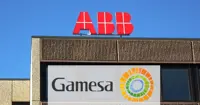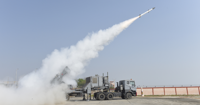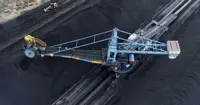Pre-IPO pricing will be a benchmark: Cairn India
25 Nov 2006
Energy has made a large pre-IPO placement. Rahul Dhir, managing director, of Cairn reveals why the company chose to go in for a pre-IPO placement before a public issue and its plans in India.
He says the pre-IPO placement is a tremendous endorsement of the company's business and, of course, the valuation of the company itself. The company has raised over $800 million from a collection of investors with Petronas being the main industry investor followed by Videocon.
 He
believes that the Indian businessess are sending a message
which is very supportive of Cairn India and its prospects.
CNBC-TV18 shares its exclusive interview with domain-b.
He
believes that the Indian businessess are sending a message
which is very supportive of Cairn India and its prospects.
CNBC-TV18 shares its exclusive interview with domain-b.
Did
you do this pre-IPO placement to set up a valuation benchmark
or did you have any issues about the size of the issue
that you are about to offer?
We are very excited about our business and the opportunity
that it offers investors. The market has been very positive
and supportive, so we were not concerned as such about
the size. In fact, we were looking to do a much smaller
pre-IPO placement.
The real driver for the pre-IPO was to get a set of long-term investors into the business to give them an opportunity to come in and take some decent equity stakes in the business prior to the IPO.
And with the people like Petronas, Videocon, Blackrock coming in, we are very excited because we have achieved what we have set out to. And that is to clearly establish a core group of long-term shareholders in the business.
The
placement has been done at about just under Rs178.50 per
share. Is it indicative of the price band you would offer
the IPO at finally?
It is premature for me to comment specifically on the
pricing range. That is going to come out in due course,
but it is a fair point that what we have a good cross-section
of investors in the pre-IPO- industry players from abroad
and from India and also some very sophisticated financial
investors.
So it is a very important value benchmark and obviously this will be reflected as our board meets to discuss what the appropriate filing range is.
In
some of the previous IPOs, we have seen pre-IPO placements
at a discount to what the eventual IPO price has been.
Without mentioning a price band or a price, could you
tell us whether the IPO is at a premium for investors
who have got in at this early stage?
There is no explicit commitment or understanding to give
the investors a discount as such. Our board will be meeting
soon and we will take into account a number of factors
in terms of setting up the price range.
This is an important valuation. We have a group of industries, who are willing to put in a fairly significant amount of money into the business at these valuations. So this will be an important benchmark, but by no means is it the only benchmark that will go into the thinking.
What
about your specific area of interest like the Rajasthan
fields — what kind of potential do you see? Some
numbers have been thrown about for how much oil and gas
you could actually extract and sell in 2009 and 2010 from
those fields. What are your own expectations?
Rajasthan has been a tremendous success for us. As you
know, we have a very successful business offshore Gujarat
and offshore Andhra Pradesh where we are producing on
a gross basis over 90,000 barrels of oil equivalent for
the day.
Rajasthan will add to that in a very substantial way. We have plans that we have articulated and we have of course submitted to the DGH, which shows that we are looking to start production there in the next two-and-a-half to three years.
So that is something that will probably lead to almost a five-fold growth in our volumes over the next three years. It is a very substantial increase in production and we are very excited because again it is an onshore asset. The resource base is huge and the project is well underway.
What
kind of volumes can one expect in 2010 if all goes well
in terms of extraction and what percentage would you get
of your total production from Rajasthan, Gujarat and AP?
In Rajasthan, in terms of gross production, which is 100
per cent from the field, we are expecting in the first
phase of almost 150,000 barrels a day and we have 70 per
cent of that and our share of that would be over 100,000
barrels per day.
To put that in perspective, today our net share of production, which we are producing from AP and from Cambay, is about 24,000 barrels a day. So going forward, Rajasthan would be adding quite a lot to our growth profile.
What
are the key risks in execution of this business, especially
from what could come from Rajasthan by way of regulatory
problems or delays in execution that might derail some
of these projections that you are talking about?
We are fortunate that it is an onshore discovery in the
middle of the desert. But, we have enough energy sources
and enough sailing water. So in a sense, it is a fantastic
resource play. The development itself is not very complex.
There is a significant amount of growth in the oil and
gas industry. So there are pressures on costs and on equipment
and having said that, we have worked very hard to de-risk
the project substantially.
We have got all the pre-construction approvals in place now. We have got a team of 150 engineers in Houston working on the project. We have got a very substantial project team here in Gurgaon working on it.
We are looking to start construction early next year and over a third of the retail design work is already done. So we are hopeful that the timeframe that we have talked about, which is commissioning and first-production in 2009, we are very confident of achieving it.
There
is a lot of excitement in the stock market as well for
a lot of the companies, which are engaged in E&P (exploration
and production), like suppliers of rigs and consultants
for exploration equipment and machinery. Do you see rub
offs for this entire sector as such as you keep developing
over the next two to five years?
That is a fair comment. If you look back over the entire
last two decades or so, I have been in this business since
mid-80s and for a long period, it was characterised with
little investment when the oil prices were pretty low.
So our industry has suffered from a serious lack of investment over the last two decades, now that lack of under investment is being addressed. So naturally as people look to invest, there are severe capacity constraints in the construction industry, in the engineering side and the services sector.
Therefore, there is a benefit for our equipment suppliers - the people who are supplying us pipes, steel, and the service contractors and it is a good time for a lot of these supply industry as well.
Could
you name three or four companies that you work with in
a large way?
Some of our bigger suppliers are multinationals like Schlumberger,
Halliburton. We have good partnerships with those companies.
We have big clients with some of the big offshore rig
companies too.
There
is an expectation that with your IPO, the whole E&P
space in India might be re-rated. Depending on that valuation,
how did you value you pre IPO placement, what benchmarks
do you use?
It is a fairly comprehensive analysis that we along with
merchant banks went through looking at discounted cash
flow of our assets themselves and how other comparable
companies who were trading both in India and other parts
of the world.
We
have now been very successful in getting a fairly diverse
group of people to invest over $800 million at this valuation
range, so that is obviously a key value benchmark.




.webp)

.webp)

.webp)






















